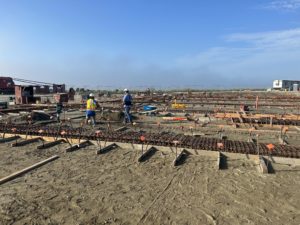The Department of Toxic Substances Control (DTSC) Restoration Program is an essential initiative to safeguard our environment from the harmful effects of toxic substances. With a focus on cleaning up contaminated sites, monitoring hazardous waste facilities, and promoting sustainable practices, this program plays a crucial role in protecting public health and preserving natural resources. This is a brief overview of the strategies and achievements of the DTSC Restoration Program, emphasizing its significance in creating a cleaner and healthier future for all.
DTSC Goal
 The primary goal of the DTSC Restoration Program is to identify, investigate, and remediate contaminated sites across California. These sites can pose significant risks to human health and the environment, and their restoration is crucial for restoring the affected ecosystems. By prioritizing the cleanup of hazardous waste, the DTSC aims to prevent further pollution and mitigate the adverse impacts of toxic substances on communities and natural habitats. Many sites are in cities, where underserved communities lack economic and housing solutions. To achieve restoration, the DTSC employs a multi-faceted approach.
The primary goal of the DTSC Restoration Program is to identify, investigate, and remediate contaminated sites across California. These sites can pose significant risks to human health and the environment, and their restoration is crucial for restoring the affected ecosystems. By prioritizing the cleanup of hazardous waste, the DTSC aims to prevent further pollution and mitigate the adverse impacts of toxic substances on communities and natural habitats. Many sites are in cities, where underserved communities lack economic and housing solutions. To achieve restoration, the DTSC employs a multi-faceted approach.
First, it conducts comprehensive site assessments to identify areas that require remediation. The program ensures a holistic understanding of the challenges and potential solutions by collaborating with various stakeholders. Such as local communities, industry representatives, and environmental organizations. Once contaminated sites are identified, the DTSC implements various remediation strategies. This includes excavation, soil vapor extraction, and groundwater treatment. The program aims to remove or neutralize toxic substances through these techniques, limiting their potential to cause harm.
DTSC Achievements
The DTSC Restoration Program has achieved significant milestones since its inception. Some examples in California are the Trails in Brea, Recreational Park in Snow Creek, and Cooley Landing in East Palo Alto. By diligently cleaning up contaminated sites, the program has successfully protected communities and ecosystems from the potential hazards associated with toxic substances. Restoring these sites has improved environmental quality and rejuvenated local economies as once-polluted areas become viable for redevelopment. In addition to site cleanup, the program actively monitors hazardous waste facilities to ensure compliance with environmental regulations. By conducting inspections, providing technical assistance, and enforcing stringent standards, the DTSC promotes responsible waste management practices. Thus reducing the risk of pollution and associated health impacts. Furthermore, the DTSC Restoration Program supports sustainable practices through public outreach and education initiatives. The program empowers individuals and communities to make informed choices that contribute to a cleaner and safer environment. Through raising awareness about waste reduction, recycling, and pollution prevention the initiatives to restore are successful.
The Department of Toxic Substances Control Restoration Program is a vital guardian of our environment. They actively work to remediate contaminated sites, monitor hazardous waste facilities, and promote sustainable practices. Through its relentless efforts, this program significantly ensures a healthier and more sustainable future for California and beyond.
